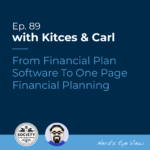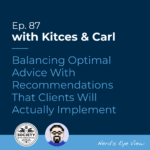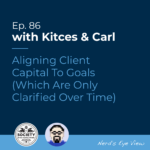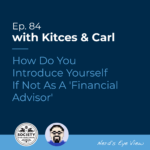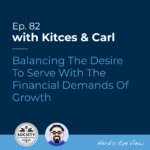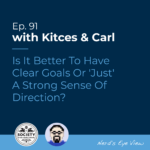
Financial advisors are often innately inclined to set long-term goals and stay on the course to help their clients achieve their goals, as the advisor understands the bigger picture of having a financial roadmap and its benefits. However, when long-term goals in a financial plan are too rigid, many clients may not be naturally inclined to stick with those goals or even with the financial advisor. It can be especially difficult for clients to stick to a strict ‘goals-based’ approach when their long-term goals are likely to change, or when the goals that their financial advisor conveys as important are not clearly connected to the client’s bigger ‘why’.
In our 91st episode of Kitces & Carl, Michael Kitces and client communication expert Carl Richards discuss why setting goals overall is an important step in developing a financial plan, but how structuring those goals around a broader sense of direction can guide the financial plan toward achieving more client satisfaction over time.
As a starting point, it’s important to recognize that goals are just guesses that are highly subject to change. Often, goals set in the initial stages of developing the financial plan do not end up being the goals achieved (which is okay!). While it is a good idea to create a roadmap for clients with long-term goals, leaving only a little room for flexibility and change can make it challenging for clients to commit, especially when they are unsure about why the goals are important in the first place. In reality, life will always change and nearly all goals will have to be adjusted at some point in time. A good way for advisors to meet the clients in the middle is to set smaller, more flexible goals that identify the clients’ desired "direction" so that they can set loose, adaptable "goals" and course-correct along the way.
Ultimately, the key point is that a ‘goals-based’ approach is not a one-size-fits-all solution. Because the future is uncertain, goals need to be reevaluated, clarified, and adjusted over time. And goals that are not based on a client’s current reality can be difficult for clients to connect to. Importantly, as the advisor/client relationship matures and goals are clarified, having flexibility allows for a deeper understanding by both advisor and client of why these goals are important. Furthermore, when the intent behind achieving the goals is understood, deeper trust – and longer-lasting relationships! – between the client and the advisor are established, instilling more confidence that goals will be achieved.


